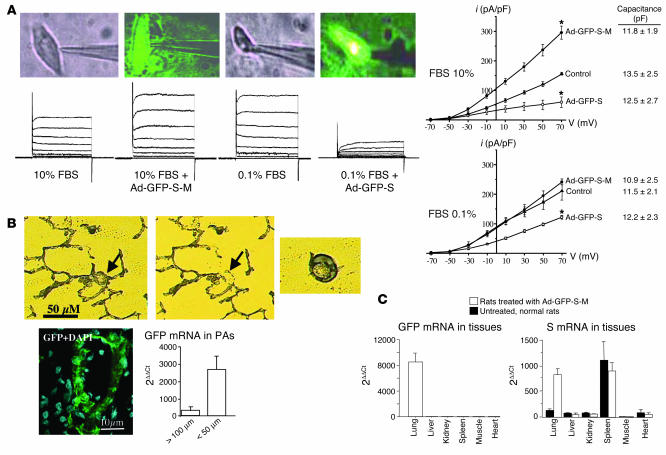Figure 5.
Selective expression of survivin mutant in resistance PAs causes an increase in PASMC outward K+ current. (A) In FBS-rich conditions (10% FBS in the medium, a condition known to increase endogenous survivin), infection with Ad-GFP-S-M causes augmentation of K+ currents and decreased capacitance (Cm, a measure of cell size), consistent with apoptosis; the opposite is seen with Ad-GFP-S infection. In contrast, in serum-deprived conditions (0.1% FBS), infection with Ad-GFP-S causes a decrease in K+ currents, consistent with apoptosis resistance. Since in these conditions endogenous survivin is absent, infection with Ad-GFP-S-M has no effect on K+ current. Cells carrying the transgenes were selected by the green fluorescence. Mean data for current density over voltage are shown on the right (n = 6 cells per group; *P < 0.01 vs. control). (B) Both GFP immunofluorescence microscopy and quantitative RT-PCR of laser-capture-microdissected resistance PAs demonstrate efficient delivery of the transgenes, particularly to the very small (less than 50 μm) resistance PAs (arrows). (C) In our inhaled gene therapy approach, the expression of the transgenes is restricted to the lungs, as shown by the expression of GFP, measured by quantitative RT-PCR. The expression of endogenous survivin in nontreated rats is minimal in all organs studied, except the spleen. Our WT-survivin primer also detects the survivin mutant, as shown by the increased lung signal in the treated rats. Data from 5 rats per group are shown.

